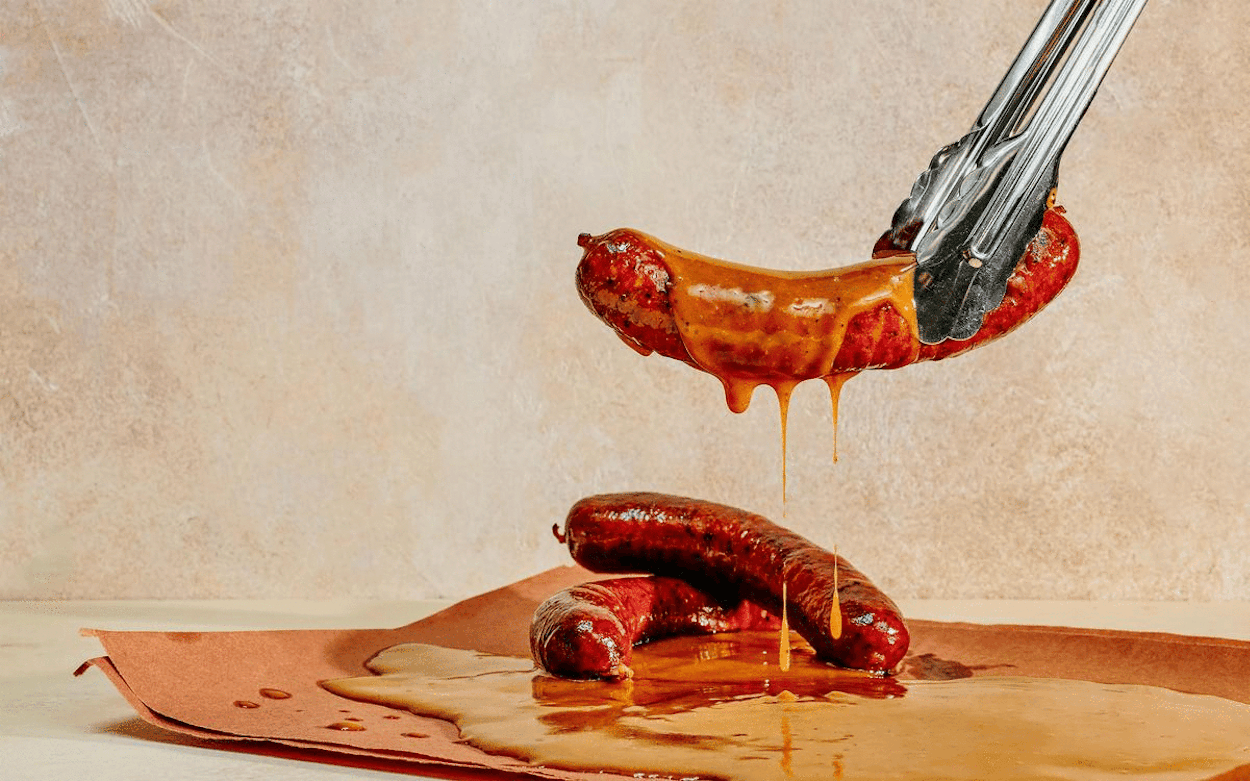Texans love barbecue sauce. Hell, I love barbecue sauce. Yes, Lockhart’s Kreuz Market, once regarded as the Texas barbecue standard-bearer, refused for decades to offer sauce (or forks, for that matter). But that last holdout surrendered four years ago, when it introduced a sauce that’s heavy on the Worcestershire and vinegar and lighter on the ketchup than is typical in most Texas sauces. Kreuz’s concession, though, hasn’t stopped every out-of-state food writer who ever ate a beef rib in Austin during South by Southwest from distilling our barbecue tradition down to one simple adage: “Brisket good, sauce evil.”
Well, it’s time to set the record straight: it’s fine to eat sauce with Texas barbecue.
Maybe you already know this. Maybe you don’t need my permission to dunk a slice of brisket into some tangy, viscous goodness. Maybe you’re not so much sauce-averse as sauce-hesitant. Maybe you’re even sauce-curious. I get it. I prefer mine on the side, lest someone get my preferred ratio of solid to liquid wrong. But I beg you, if there’s a squirt bottle on the table, please don’t ignore it. Pitmasters are putting much more effort into creating sauces than they used to, and they don’t see them as a sop to the undiscerning. Many of them actually love the stuff.
Don’t believe me? Then perhaps you’ll believe Evan LeRoy, of Austin’s LeRoy and Lewis (ranked fifth on our list). “I don’t like Salt Lick’s barbecue sauce,” he told me. “I love Salt Lick’s barbecue sauce.” The sweet, mustardy concoction (admirably ketchup-free) bottled by the legendary Driftwood joint was developed from a Southern-leaning family recipe and “Texafied” with cayenne pepper and other spices. The way it glazes a beef rib is deeply seductive.
Thankfully, more pitmasters are drawing inspiration from the Salt Lick. In Austin, miso, serrano, and lime join forces to brighten the burnt ends at Kemuri Tatsu-ya. In Cleburne, Bare Barbecue’s Firebox sandwich will have you questioning why it took so long to couple oak-scented brisket with herbaceous chimichurri. And you can thank jalapeño for the bite of the sauce on Slow Bone’s Texas Nail sandwich, in Dallas. LeRoy and Lewis’s signature sauce is ketchup-based, but beet juice and mustard give it a unique earthiness.
Mustard-based sauces are showing up all over Texas. The whole-grain iteration at Houston’s Truth Barbeque has become my go-to condiment for just about everything at home. A sweeter version at San Antonio’s Smoke Shack BBQ is just as addictive. At Dozier’s BBQ, in Fulshear, the mustard sauce hovers at the acidic end of the spectrum, which works well with the juicy sausages. And over in Houston, at Gatlin’s BBQ, mustard is the key to a sauce that makes the chicken wings sing.
Some joints have strayed so far from the ordinary that they don’t even call their creations barbecue sauce. At Austin’s Distant Relatives, the chile-vinegar dip is a rust-red paste of dried Anaheim and African bird chiles mixed with vinegar and aromatics, enriched with butter, and smoked. It adds complexity to the superbly smoked chicken it’s served alongside. At Zavala’s, in Grand Prairie, the green sauce—with tomatillos, serranos, and poblanos—improves every meat on the menu.
None of this is to say that all sauces are good. Sullying a perfectly prepared rib with a tarry mix—likely made with ketchup, corn syrup, and liquid smoke—dredged up from a five-gallon bucket should be a crime, and too many pitmasters are guilty. But there are better choices out there.
Yes, brisket is good. But that doesn’t mean that brisket with barbecue sauce is evil. Sometimes the combination is downright delicious.
This article originally appeared in the November 2021 issue of Texas Monthly with the headline “Permission to Dunk.” Subscribe today.









